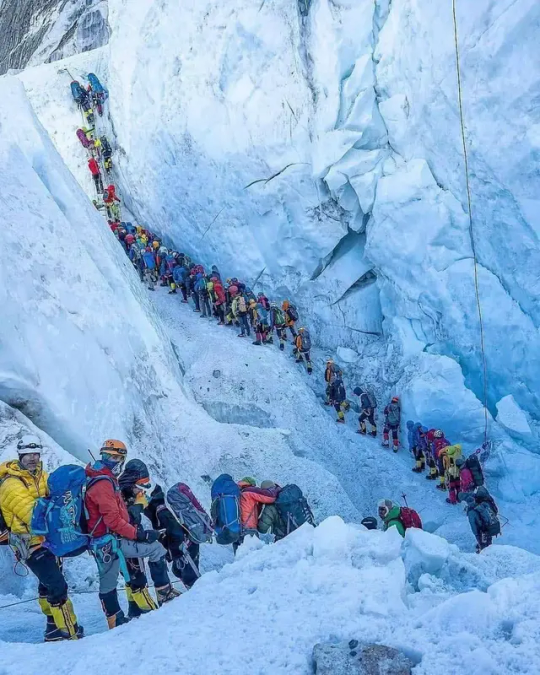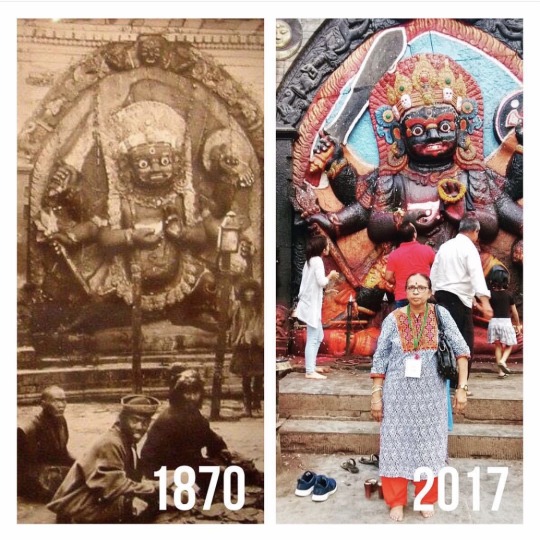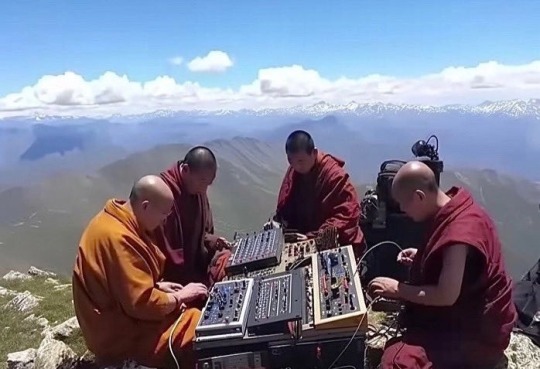#tour nepal
Explore tagged Tumblr posts
Text
#nepal#nepal tour#tour Nepal#himalayas#tour#travel guide#trekking in nepal#annapurna circuit#everest#annapurna base camp
1 note
·
View note
Text

#street photography#street#film photography#fujixseries#fuji x100v#fujifilm#urban photography#films not dead#wanderlust#wanders#travel#travels#vacation#travel bucket list#travel photo diary#wander#explore#nepal#nepali#nepal trip#nepal travel#south asia#kathmandu#streets#busy#asia#everest#himalayas#flight tour#plane window
7 notes
·
View notes
Text
Everest High Pass Trekking: The Ultimate Himalayan Challenge
Everest High Pass Trekking is a thrilling adventure for those who want to explore the Everest region in the most exciting way. This trek takes you through three high mountain passes—Kongma La, Cho La, and Renjo La—offering breathtaking views of Everest, Lhotse, Makalu, and Cho Oyu. It is a perfect choice for trekkers who love challenges and want to see the best of the Himalayas.

The journey passes through beautiful Sherpa villages, ancient monasteries, and glacial lakes like the stunning Gokyo Lakes. Walking on rocky trails, crossing glaciers, and climbing steep passes make this trek both tough and rewarding. The feeling of reaching each high pass and seeing the incredible views is unforgettable.
Everest High Pass Trekking is best in spring and autumn when the weather is clear and the mountains look their best. This trek is for those who want more than just a regular trekking experience—it’s an adventure of a lifetime!
2 notes
·
View notes
Text
6 Exclusive Gorakhpur to Nepal Tour Packages
Embark on an unforgettable journey with our 6 Exclusive Gorakhpur to Nepal Tour Packages! 🚘🏔️ Whether you seek spiritual bliss in Lumbini 🏯, adventure in Pokhara 🚣♂️, or wildlife safaris in Chitwan 🦏, we have the perfect itinerary for you.
Enjoy hassle-free travel with comfortable transportation 🚗, guided tours 🎒, and cozy accommodations 🏡. Our Gorakhpur to Nepal tour package ensures a seamless experience filled with breathtaking landscapes 🌄, rich culture 🎭, and thrilling adventures 🏕️.
📞 Book now with Jumanji Holidays for an amazing Nepal getaway! 🚀✨

#GorakhpurToNepal 🛣️#NepalTourPackages 🌍#JumanjiHolidays 🏞️#ExploreNepal 🏔️#TravelMadeEasy 🚘#trekking in nepal#nepal tour
2 notes
·
View notes
Text
Nepal Tour Package from Gorakhpur
Discover Nepal’s enchanting charm, breathtaking snow-capped mountains, revered temples, and a vibrant cultural legacy that will mesmerize you. Embark on a journey to Nepal Tour Package from Gorakhpur, a land of majestic snow-clad peaks, sacred temples, and a vibrant cultural tapestry that promises to leave you spellbound your trip with us promises to be stress-free, comfortable, and unforgettable.
Explore Nepal’s most iconic destinations
Kathmandu: Explore the vibrant capital city, which is filled with ancient temples, bustling bazaars, and UNESCO World Heritage sites like Pashupatinath Temple, Swayambhunath (Monkey Temple), and Durbar Square.
Pokhara: Experience the serene beauty of this lakeside city, known for its stunning views of the Annapurna range, tranquil Phewa Lake, and adventurous activities like paragliding.
Chitwan National Park: Explore Nepal’s rich wildlife with jungle safaris, where you can spot rhinos, Bengal tigers, elephants, and a variety of bird species.
Nagarkot: Witness breathtaking sunrises and panoramic views of the Himalayan peaks, making it a perfect destination for peace and nature lovers.
Travel Packages for Every Type of Traveler
Family Travelers: Perfectly designed to include family-friendly destinations, activities, and accommodations, ensuring an enjoyable experience for all ages.
Couples: Romantic getaways with serene locations, cozy accommodations, and memorable experiences tailored for quality time together.
Friends: Adventure-packed itineraries with exciting activities and plenty of opportunities to explore and bond.
Solo Travelers: Safe and seamless travel plans, offering private cab services and curated itineraries to explore Nepal independently and confidently.
Private Cab Services: Enjoy a hassle-free journey with maximum comfort, convenience, and flexibility throughout your trip
Comfortable and Cozy Accommodations
Relaxing Stays: After a day of exploration and adventure, unwind in well-maintained accommodations designed to offer a peaceful retreat.
Modern Amenities: To ensure a comfortable experience, enjoy facilities like clean and spacious rooms, hot water, Wi-Fi, and attentive service.
Variety of Options: Choose from budget-friendly stays to premium hotels, tailored to suit your preferences and budget.
Delicious Culinary Experiences
Authentic Nepalese Cuisine: Savor the traditional flavours of Nepal, including dishes like dal-bhat, momos, and thukpa, offering a true taste of the region.
Diverse Menu: For those seeking variety, the menu offers a mix of local and international cuisines to cater to every palate.
Fresh and Hygienic Meals: All meals are prepared with fresh ingredients, ensuring quality and hygiene for a delightful dining experience.
Dining Convenience: Enjoy meals conveniently arranged at your accommodation or top-rated local restaurants during your journey.
Exclusive Offer Details
Flat 15% Discount: Book now to avail of a flat 15% discount on your Nepal Tour Packages. This special offer is available for a limited period only. Book now to lock in this incredible deal.

Step into the enchanting world of Nepal, a land of majestic snow-covered peaks, revered temples, and a vibrant cultural heritage that promises to take your breath away. Start your adventure with Musafircab Gorakhpur to Nepal Tour Packages, offering the perfect mix of thrill, serenity, and exploration at wallet-friendly prices. From the spiritual streets of Kathmandu to the picturesque landscapes of Pokhara and beyond, our packages are designed for every type of traveller — families, couples, or solo explorers. With private cab services ensuring comfort and flexibility, expertly planned itineraries, cosy accommodations, and delicious meals, we take care of every detail so you can focus on making memories.
2 notes
·
View notes
Text
#nepal trip#nepal#trekking in nepal#nepal travel#himalayas#travel blog#nepal holiday package#nepal tour
2 notes
·
View notes
Text

#sightseeing#tour package#traveling#trekking#places#trending#travel photography#himalayas#nepal#travel#trekking in nepal#everest base camp trek#everest base camp helicopter tour#mount everest#mt everest
4 notes
·
View notes
Text
Luxury 2 bedroom American style and pattern apartment for rent modern house plan and setup with pop ceiling lights design very spacious affordable home located at adageorge area of port Harcourt city rivers state Nigeria.
#lagos#abuja#vietnam#wike#bangladesh#nysc#rivers state#nigeria#youtube#portharcourt#Dowen College#XViral#Afe Babalola#Opay#nepal#trekking in nepal#nepali girl#nepal trip#india#morocco#ladakh#nepal tour
2 notes
·
View notes
Text


Kaala Bhairav temple, Kathmandu Nepal.
#hindu#hinduism#spirituality#temple#shiva#hindu mythology#lordshiva#parvati#kailasa#krishna#sanathandharma#sanathanadharma#bhairava#kalbhairav#mahakaal#mahakal#katmandu#nepal tour#visit nepal
23 notes
·
View notes
Text

#manaslu#manaslu base camp trek#nepal#himalayas#nepal tour#trekking in nepal#travel guide#tour#manaslu trekking#manasluregion#manaslu circuit trek
3 notes
·
View notes
Text
2 notes
·
View notes
Text
History And Origin of Nepal: A journey through time
Lying right in the middle of the Himalayas between India and China, Nepal is a country that is full of a whole of history. The story it tells is of myths, legends, dynasties, and influences that flowed on the waves of both the Indian subcontinent and the Tibetan plateau. The origin of Nepal seems to be completely intertwined with geographical elements, religion, and cultural heritage. In this blog, one is introduced to the historical journey of Nepal and formation of Himalayas, from its root to the formation of a modern nation.
Mythological Beginnings: Legends of Nepal's Formation
The history of Nepal opens with mythological accounts about the origin. Ancient legends say that Kathmandu Valley was once a huge lake, inclusive of what today is considered the cultural and historical heart of Nepal. According to this, a Buddhist saint called Manjushree, coming from China, saw a lotus flower falling in the middle of the lake and wanted to reach it. At Chobar, he cut a gorge with his sword thereby allowing it to drain the water so that the valley could be habitable. Thus, the fertile land of the Kathmandu Valley came into being. This mythical event is symbolic of the birth of Nepal. Another popular legend describes how the god Vishnu, in the avatar of a boar, or Varaha, raised Nepal out of the waters. These myths said much not only about how the people of Ancient Nepal viewed their land but also revealed the deep religious meaning always permeating Nepalese culture.
Unification of Nepal: The Rise of the Shah Dynasty
Nepal’s political landscape changed dramatically in the 18th century with the rise of Prithvi Narayan Shah, the ruler of the small principality of Gorkha. He embarked on a campaign to unify the various fragmented kingdoms and principalities of the region. After several attempts, Prithvi Narayan Shah successfully conquered the Kathmandu Valley in 1768, marking the beginning of the Shah dynasty and the creation of modern Nepal. Prithvi Narayan Shah's unification campaign laid the foundation for a strong, centralised kingdom. He strategically kept Nepal independent from both the expanding British Empire in India and the Qing Dynasty in China by maintaining a policy of isolation and diplomacy.
The Collision of India and Eurasia: Birth of the Himalayas
Nepal is home to Himalayas: the home to world's highest peaks, including Mt. Everest.The story of the Himalayas really started when the Indian subcontinent, shortly after it broke away from Gondwana around 100 million years ago, began its drift northward. There laid between the Indian plate and the Eurasian plate at that time the Tethys Ocean. In this process, the Indian plate was submerged underneath the Eurasian plate, and it is both slow and powerful. These movements created strong geological forces which pushed up the sedimentary rocks of the Tethys Ocean, hence creating the Himalayan mountain range. The impact of the collision caused the Earth's crust to fold, that formed the towering peaks of the Himalayas. The immense pressure created large thrust faults, which caused the land to rise vertically. Over time, these processes built some of the highest mountains in the world, including Mount Everest (8,848 meters) and Kangchenjunga (8,586 meters), both of which are located in the Nepalese Himalayas.
Geological Zones of the Nepal Himalayas
The Nepalese Himalayas were divided into a number of distinct geological zones, which reflect their complex history of formation. These include the following:
Terai Plains: This is a flat, fertile region situated on the southernmost part of Nepal, marking the northern edge of the Indo-Gangetic plains. They actually were formed by sediments deposited by the rivers flowing down from the Himalayas.
Siwalik Hills: Lying just north of the Terai, Siwalik Hills are the youngest part of the Himalayas that were uplifted about 10 to 20 million years ago. It is a folded and faulted rock area which has been uplifted relatively recently.
3.The Mahabharat Range: This range lies north of Siwalik, much older, loftier, and with steeply descending slopes enclosing profound valleys. Metamorphic and sedimentary rocks common in this region bear the telltale presence of the gradual uplift that has occurred here over millions of years.
4.Lesser Himalayas: This zone lies north of the Mahabharat Range and consists of a series of hills and ridges that rise up to about 4,000 meters. The Lesser Himalayas are made up of older rocks, mainly sedimentary and metamorphic uplifted during the early phase of collision between the Indian and Eurasian plates.
5.Greater Himalayas: Higher or Greater Himalayas forms the central backbone of this mountain and contains all the highest peaks including Mt. Everest and Kangchenjunga. Ancient metamorphic rocks, mainly schist and gneiss, are dominant in this zone, which has undergone extreme heat and pressure for millions of years.
6.Tibetan Plateau: The Tibetan Plateau forms the northern boundary of the Greater Himalayas, and is rightly called the "Roof of the World." This high-altitude plateau, in turn, had been raised as the Indian plate moved northward and was thrust underneath the Eurasian plate.
Thus, the history of Nepal represents a tapestries history with myths, conquests, cultural achievements, and political upheavals. Starting from the mythological beginnings down to its present-day status as a republic.The history of the Himalayas in Nepal is a long geology that has taken millions of years to unfold. From the first collision between the Indian and Eurasian plates to the towering peaks that now define the region, the Himalayas remain a living testimony to the dynamic forces shaping our planet. That spectacle of beauty and grandeur, yet at the same time a grim reminder of the immense power of nature and the precarious balance between the geological processes of Earth and the fragile ecosystems which find life in their shadow. Nepal's journey through history has taken a path no less dramatic than the landscape it inhabits. As the nation continues to grow, its past shapes its future, guided by the aspirations of the people that populate it.
2 notes
·
View notes
Text

#street photography#street#film photography#fujixseries#fuji x100v#fujifilm#urban photography#films not dead#wanderlust#wanders#travel#travels#vacation#travel bucket list#travel photo diary#wander#explore#nepal#nepali#nepal trip#nepal travel#south asia#kathmandu#streets#busy#asia#everest#himalayas#flight tour#plane window
7 notes
·
View notes
Text
Gokyo Valley Trekking – A Hidden Gem in the Everest Region
Gokyo Valley Trekking offers an unforgettable adventure, taking you through some of the most stunning and less crowded parts of the Everest region. If you're looking for an incredible trekking experience with breathtaking views of the Himalayas, Gokyo Valley Trekking is the perfect choice. The trek takes you to the beautiful Gokyo Lakes, a series of turquoise lakes surrounded by snow-capped peaks, including Mount Everest and Cho Oyu. Along the way, you’ll pass through peaceful Sherpa villages, lush forests, and scenic valleys, making this trek both visually and culturally rich.

Why Choose Gokyo Valley Trekking?
One of the main attractions of Gokyo Valley Trekking is the chance to explore the Gokyo Lakes, which are considered sacred by the locals. The turquoise color of the lakes against the backdrop of towering peaks creates a stunning sight. The trek also takes you to Gokyo Ri, a viewpoint at 5,357 meters that offers some of the best panoramic views of Mount Everest, Makalu, Lhotse, and Cho Oyu. If you want to avoid the busy crowds of other Everest treks but still enjoy fantastic views and cultural experiences, this trek is perfect for you.
Trek Duration and Route
Gokyo Valley Trekking typically takes 8 to 12 days, depending on your pace and itinerary. The trek begins with a scenic flight from Kathmandu to Lukla, the gateway to the Everest region. From there, you will trek to Namche Bazaar, a bustling Sherpa town where you will acclimatize. Then, the trail leads to Dole, Machhermo, and finally Gokyo, where you will visit the lakes and hike up Gokyo Ri for stunning mountain views.
2 notes
·
View notes
Text
youtube
A three-day ritual Tiji (Tenchi festival) celebrated in Upper Mustang (Lo Manthang) has become famous among the foreigners as well. The festival is known as the "chasing of the demons" explained on the Tiji Myth.
#Tiji Festival#Mustang Tiji Festival Tour#Upper Mustang Tiji Festival Trek#Festival Tour in Nepal#upper mustang trekking#festivevibes#Youtube
3 notes
·
View notes
